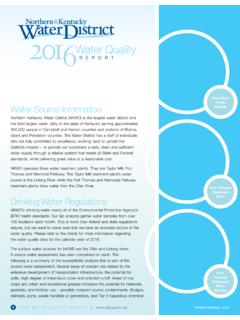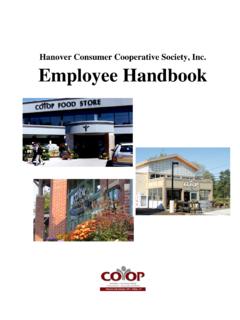Transcription of WIC Grocery Store Authorizations Need to Remain Frozen ...
1 WIC Grocery Store Authorizations Need to Remain Frozen Until High Prices Can Be Controlled Summary The California Special Supplemental Nutrition Program for Women, Infants and Children (WIC)1. has experienced a sharp rise in food costs over the past few years. While there are likely many factors contributing to this troubling increase, it can be partially attributed to an explosion in the number of small Grocery stores that have been authorized during this same period, and an increase in the number of WIC clients who are shopping in these smaller stores. These small businesses have higher costs, and thus higher prices, than larger grocers and supermarkets. Despite the higher prices, WIC authorizes these stores to ensure that WIC clients have sufficient access to WIC benefits.
2 In most states, small stores draw a very small share of WIC customers and therefore have a minimal impact on WIC costs. But in California they are drawing a substantial share of WIC Customers and driving up WIC costs. Unfortunately, there is evidence that some of these small stores are gravely overcharging for WIC foods. The exorbitant prices charged at some of these stores results in the WIC program spending more than it should on food. WIC has a long history of strong program integrity and sound utilization of rigorous cost containment strategies. Allowing these stores to continue this practice undermines WIC's record and cheats taxpayers and the federal government. In a federal budget environment in which WIC is threatened with cuts, a swift response from California is needed so the program is not jeopardized by perceptions that it is not being managed effectively.
3 For this reason, the California WIC Association (CWA)2 supports a continued moratorium on all new WIC vendor Authorizations , except in cases where participant access would be compromised, until such time that this problem is dealt with sufficiently. The Problem Unlike CalFresh (food stamps), WIC is not an entitlement program. The program must operate within a yearly federal appropriation (WIC is 100% federally funded). The California Department of Public Health (CDPH), WIC's administering state agency, monitors food costs and projected caseload very carefully to stay within budget. Higher food costs mean that fewer WIC. participants can be served -- unless Congress appropriates more funding for the WIC program. California's WIC food package costs have risen more sharply than other States in the West.
4 According to USDA, from 2009 to 2011, California WIC food costs increased by , while all other states in the USDA Western Region showed a combined average decrease of California's WIC vendor population has grown rapidly, from a total of 3,527 stores in 2007 to 5,135 in 2011. During this same period, the category of small, owner-operated stores with only 1 or 2 cash registers more than tripled, growing from 339 stores in 2007. to 1,144 in In 2007, 1-2 register stores accounted for less than 3% of WIC redemptions in California. They now account for 13% of WIC redemptions. Data from February 2012 indicate that California WIC is paying 1-2 register stores prices for WIC foods which are 50% higher than prices paid to other authorized vendors for comparable This egregious overpricing of WIC foods is costing California WIC an estimated $49.
5 Million dollars annually. This is nearly 5% of the state's annual WIC food Fast-Growing Exploitation of a Loophole in the WIC System WIC participants are not price-sensitive shoppers with their WIC checks; they receive the same WIC foods regardless of where they shop and how much is charged for WIC Often, they will redeem their WIC checks in stores that are convenient and easy for them to access. But the excessive prices currently being charged in some small stores are causing complaints from WIC shoppers, who understand that these stores are abusing the WIC system (and the taxpayers' dollars) for personal gain. Here are some examples of complaints CWA recently received from local WIC programs: We had WIC Participants complaining of the high and different prices being charged to them.
6 For example the non-WIC milk was $ a gallon and the WIC milk was $ a gallon ($ for peanut butter and $ for cereal!) .. One participant was told by a Store employee, What do you care what it costs? WIC is paying for it. She replied, I work and my taxes are paying for it! 8. Several WIC participants have brought to our attention the cost of WIC foods from this WIC. vendor. They are very concerned about the prices of WIC foods at this Store and what the WIC. Program is paying for these foods. As you can see from the attached receipt, a box of 18-oz cereal costs $ The participants told us that the WIC Program is getting ripped off. They will not go back to that Store again. Another participant was very upset, stating that this reduces others' access to WIC benefits. 9. Consumer complaints are not limited to price gouging.
7 CWA has also seen examples of stores charging high prices for WIC items and lower prices for comparable non-WIC items, confusing and angering shoppers; stores putting all the WIC foods in the corner ( a WIC Store within a Store ) and then charging higher prices for them; and still other stores stocking only WIC foods on the premises, thereby appearing to be a WIC Only Store , but failing to charge the average prices officially required by actual WIC-Only Some of these practices violate the current program rules, but others exploit loopholes. Some of these stores are resorting to aggressive marketing and incentives to draw more WIC. business, such as free household appliances, soda, candy, infant formula, buy-one-get-one-free deals, and even cash rebates. Currently, restrictions on incentives apply only to WIC-only.
8 Stores and not to regular Grocery stores. CWA strongly believes that using incentives to sell WIC foods is an inappropriate use of taxpayer funds. Offering free food, especially junk foods, but even WIC foods or infant formula, distorts and dilutes the intent and purpose of the evidence-based WIC food prescription and WIC nutrition education Thus, a loophole in the WIC Grocery Store peer group pricing system is being exploited by a growing number of small stores, assisted by incentives, whose entrepreneurial owners are attracted by the potential to maximize their profits in a competitive Grocery environment. This extremely troubling trend is proliferating rapidly all over the state with new reports from both rural areas and low-income urban neighborhoods surfacing almost every day.
9 Some small Store owners appear to be receiving assistance from knowledgeable and centralized WIC middlemen or brokers. These WIC brokers can supply wholesale WIC foods, install a WIC- specific cash register and computer interface, and provide the basic know-how which enables a small Store owner to implement a profitable WIC business as a turnkey operation. 12. Moratorium Needed While Solutions Are Crafted If the current moratorium13 on new WIC vendor Authorizations is lifted, it is extremely likely that many more small stores would submit applications and be authorized, thus putting the WIC program at increased risk for wasteful food costs and an unmanageable vendor compliance caseload. Contrary to some reports that the moratorium is causing food deserts, there is a long-standing federally-required exemption to the moratorium for any Store requesting authorization in a location where participant access is a problem (for example, in an isolated or rural area where there are very few stores where WIC participants live).
10 Lifting the current vendor authorization moratorium without implementing long-term solutions to this problem puts the California WIC program at very serious financial and political . jeopardy. WIC funding is already at risk because of the Budget Control Act enacted by Congress last summer, which imposes across-the-board cuts to all federal domestic discretionary programs, including WIC, starting in January, Congress is currently considering the Administration's WIC funding request for the 2013 fiscal year and runaway food costs in California could severely undermine confidence in the value of WIC. Without a prompt course correction, these rising costs will likely result in caseload cuts and direct harm to women, infants, and children served by WIC an unconscionable outcome.





